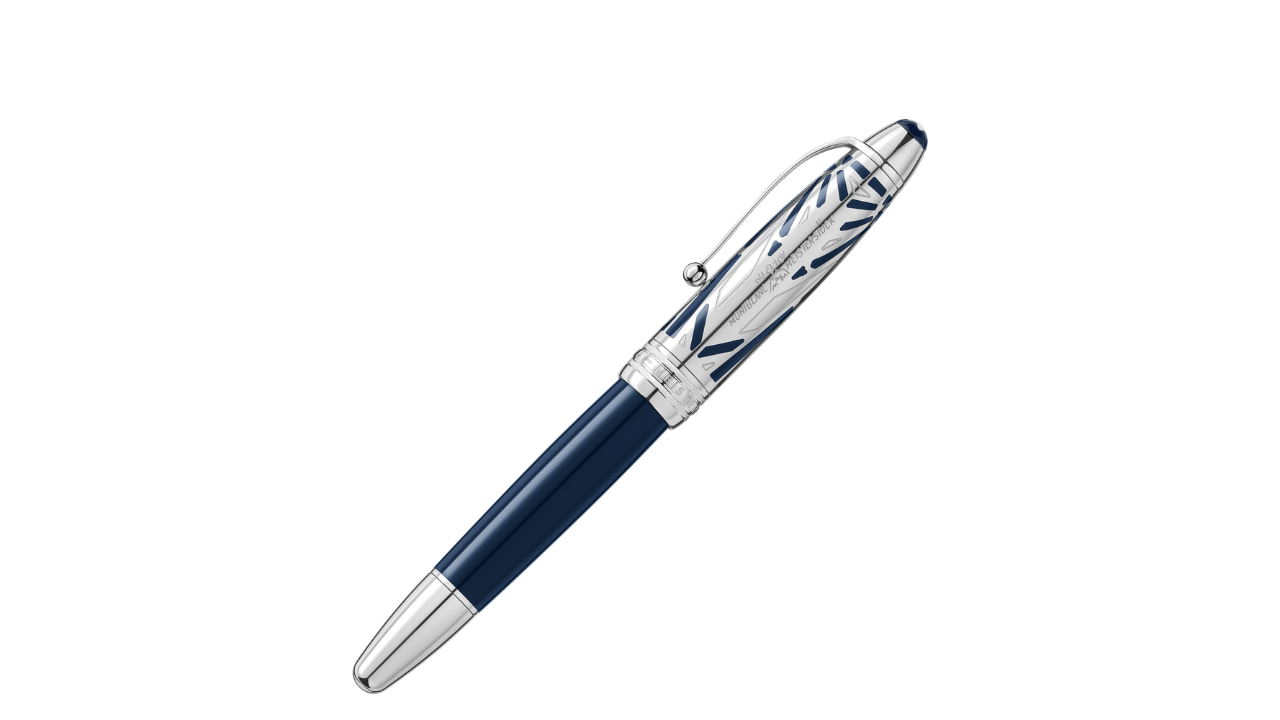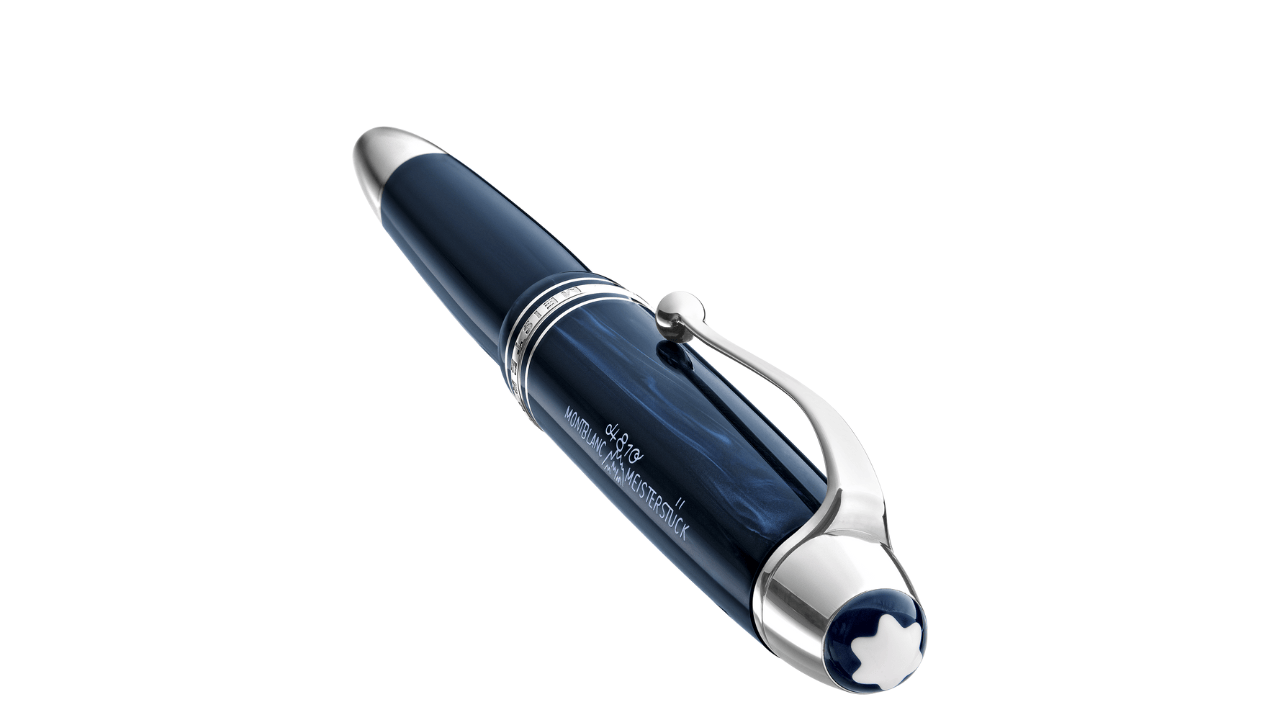Like so many before it, and since, the demise of the fountain pen was brought about by technological developments. In this case, it was the ballpoint pen, which, by the 1960s, had achieved a state of practicality and affordability that made the fountain pen obsolete. But the fountain pen did not die completely. Like some before it, and since, it has found a niche for itself as an object of curiosity, status and desire, valued for form rather than function.

The best-known example is Montblanc. Today, the brand has a wide range of luxury lifestyle goods, but it is indelibly associated with the fountain pen, having been founded in 1906 as a pen-maker. The current collection of writing instruments is a colourful, artistic array of collectibles, including lines that pay homage to great artists, writers and other important historical figures. Some of these offerings are ornately decorated using precious metals and jewels—the pen as a platform for extravagance, rare craftsmanship and as a work of art.

In any Montblanc boutique, however, there is always a space reserved for something much plainer: an uncomplicated, uncluttered black pen; cigar-shaped with rounded ends, decorated with only a simple clip and metal bands—and the unmistakable white star logo on the cap, of course. This is the Meisterstück, Montblanc’s most iconic product, and the one that made the company a household name back in the handwriting days of yore.

Meisterstück, which means ‘masterpiece’ in German, was first sold in 1924—100 years ago precisely—but the spirit of the collection comes from a tradition of centuries earlier. A ‘meisterstück’ was something a journeyman crafter would create as a demonstration of skill in order to join a guild. In the context of Montblanc—or the Simplo Filler Pen Co, as the company was known prior to 1934—they were especially fine pens created by master craftsmen for personal use. By making it a product line, the intent was to offer the customer the finest product the company was capable of, a ‘Sunday pen,’ if you will—a daring move during the unstable inter-war years, and a time when pens were meant to be mere tools.

The Meisterstück built a name for itself and, during its early years, was translated to different languages for the various markets—it was also known as ‘Masterpiece’ or ‘Chef d’Ouevre’, to share a couple of examples. As with many pens and products, the Meisterstück went through many design iterations, but the boxiness of the 1920s and 1930s gave way to the iconic cigar shape in 1949. That year, it also introduced three models of the same design concept, but in different sizes: 142, 144 and 146, with the central ‘4’ denoting that it had a piston filler system. In 1952, a legend was brought to market—Montblanc introduced the 149, an oversize pen with a commanding feel and presence in the hand. It quickly became a favourite of politicians, diplomats, heads of state—one of its most famous users was the American president, John F Kennedy—and, of course, ambitious business executives. The 149 was the crowning achievement of a brand that would also go on to be seen in the hands of many a pop culture figure—actors, rock stars and even the Pope.

The Meisterstück did stray forwards, for a moment—in the 1960s, it adopted a streamlined, sharp-edged modernist design—but, by the 1970s, had reverted to the cigar shape, where it would stay. The dominance of the fountain pen was over, but the Meisterstück’s iconic status would live on.

Today, the Meisterstück collection is a broad one, with a range of colours and formats that includes ballpoints and mechanical pencils. But there will always be room for the Meisterstück fountain pen, in the basic black. The 144, 146 and 149 are still on offer, with the former two rechristened ‘Classique’ and ‘LeGrand’ respectively. The Classique is cartridge-filled, but the LeGrand and 149 are still piston-filled.

The modern-day Meisterstück fountain pen is essentially the same as it was, though refined. For example, the body is not made from the cantankerous materials of the early 20th century like ebonite or celluloid. It is an injection-moulded resin, diamond-polished such that it is smooth, almost sensuous, in the hand, and possessing of a curious, almost luminous shine. The clip is simple but functional. The cap unscrews reassuringly to reveal the gold nib. These nibs are a point of pride for Montblanc’s manufacture in Hamburg, Germany—in 14k or 18k gold, created with a six-week, 35-step process, with the final shaping of the iridium tips done by hand, as is the final testing. They are decorated with scrollwork, and the number ‘4810’ has been on Montblanc nibs since 1930, denoting the height of the eponymous mountain in metres. In the hand, there is a certain weight to it, and it is well-balanced as it is put to paper; the nib is stiffer than it would have been in the past, to accommodate modern writing forms, but it is smooth and leaves a wet, generous line.

And it is still a fantastic writer. This is not the case for all fountain pens of today, where form is valued over function and ergonomics can take a backseat to ornamentation—a point of pride as it sits on the desk, for sure, but meant only for a flourishing signature and no more. There was a time when the fountain pen was an everyday carry, when it was used for pages and pages of letters, ledgers and bookkeeping. The Meisterstück embodies that still, with a workmanlike nature beneath all its fine touchpoints. You could write with one for hours. You probably won’t, but you could.




